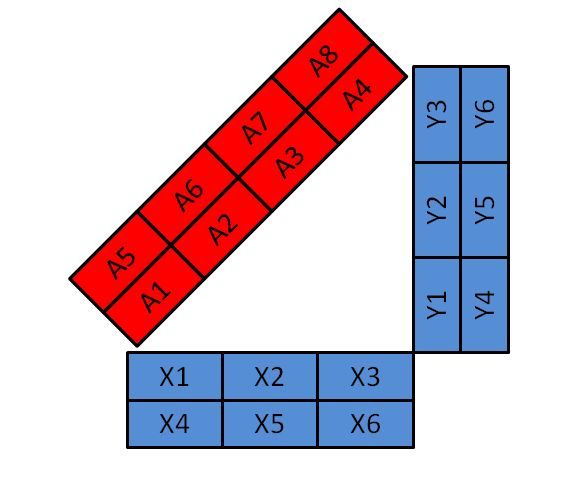It's not an easy one to describe but here goes.
2 BGs (A & B) from the same side are positioned at right angles to each other - sort of 'L' shaped - both facing into the internal corner of the L.
An enemy BG (X) charges both units simultaneously, hitting them both so that each unit impacted only has 2 base/stand of their BG unengaged on the inward corner of the L.
NB: It cannot step forward it's middle base to contact both A & B (or A or B) as this would break it's formation as the angle of the L means a large forward movement to engage.
In the subsequent melee - the attacker (X) cannot aligned to either A or B - so all remain in the initial Impact position. (Likewise in the next bound the BG's A&B cannot align because they will also get into each others way - both the outer ends of the L were also blocked by other troops - so no room to move).
However - (X) is now left with a strange situation in that it now has 0 overlaps on the outside of the L but has 4 unengaged overlaps on the 2 internal bases at the inward corner of the L (2 from each enemy BG)
The 'ruling' we had at Wallenstein was that "internal overlaps" cannot fight or add to the melee.
Personally I found this odd & couldn't find anywhere in the rules to back that up - but wasn't really in a position to challenge the person making the ruling:
FYI - you know who you are Richard
Having not come across this situation again in the last 8 months I had put it down to an oddity e.g. my own fault for deploying dismounted Tudor M@A & Longbowmen in what I thought was a nice trap for impetuous Warriors (Samurai).
Last night it was a New Model Army P&S BG impacting two BGs of Later Austrian foot - where the centre of the P&S BG managed to miss hitting one of the Austrian musketeer bases in the middle of the 'L'
Anyway - I was just wondering if anybody else could find the page in the rules that clarified this for me (& Mike) my opponent last night?
So in short - do internal overlaps count in melees - obviously we are only talking about the 1 'unengaged' base on either side of the bases already in contact.
Thanks
Mark




